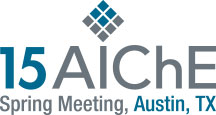

Methanol injection into natural gas streams is commonly used to prevent hydrate formation and icing. Later, when the gas is scrubbed, the residual methanol enters and tends to build up in the amine treating system. Aqueous amines tend to absorb methanol present in the feed gas. This increases the solubility of other hydrocarbons and affects acid gas vapor-liquid equilibrium. Additionally, significant amounts of methanol then enter in the acid gas fed to the sulfur unit, causing catalyst degradation, lower sulfur recoveries and higher sulfur emissions. Existing simulation tools do not allow for simulation of methanol in amine systems. Recently, we introduced the ability to simulate methanol in amine systems on a mass transfer rate basis. This paper details how methanol distributes in amine systems, it examines the effectiveness of a water wash stream upstream of the amine absorber, and it quantifies its effect on reboiler energy usage in a typical LNG unit.
